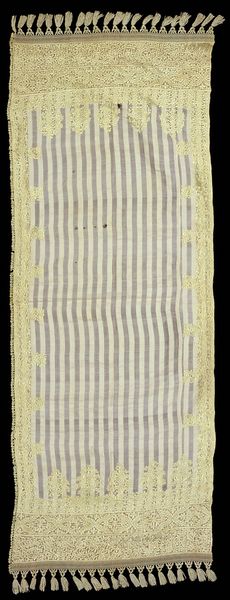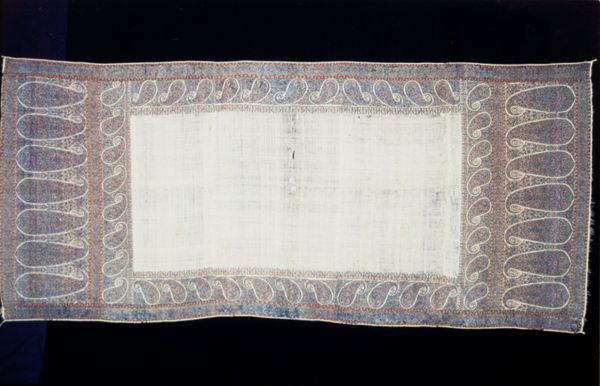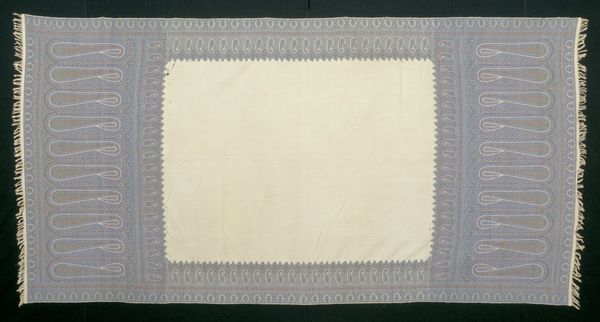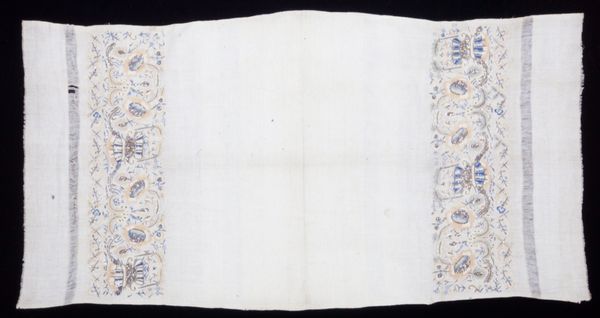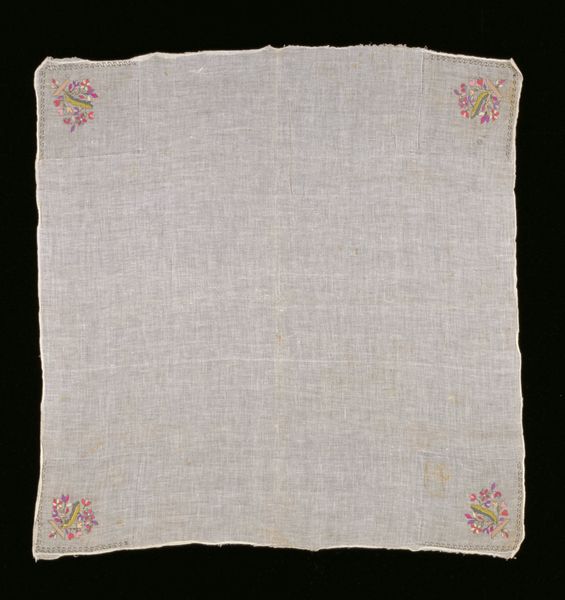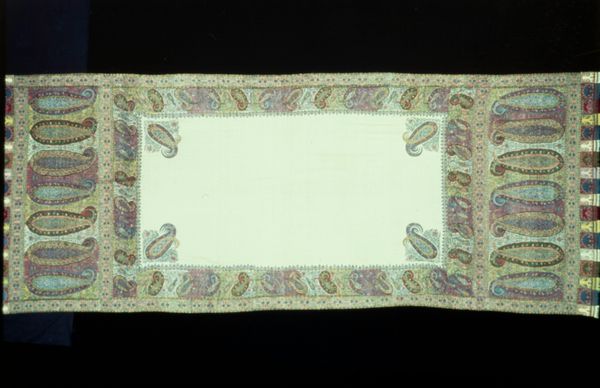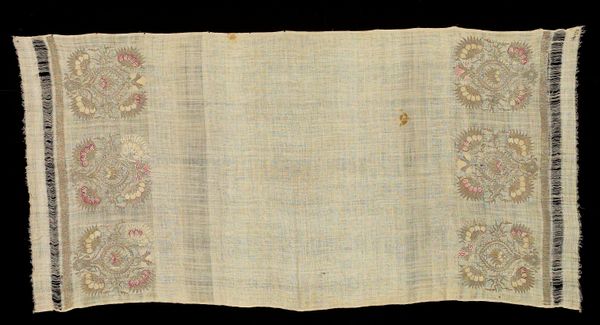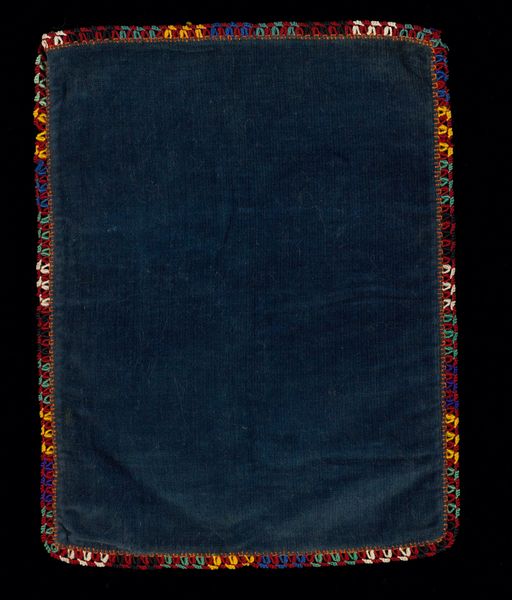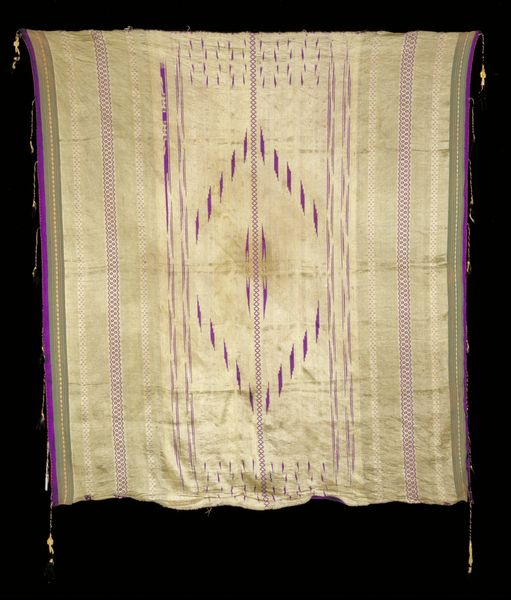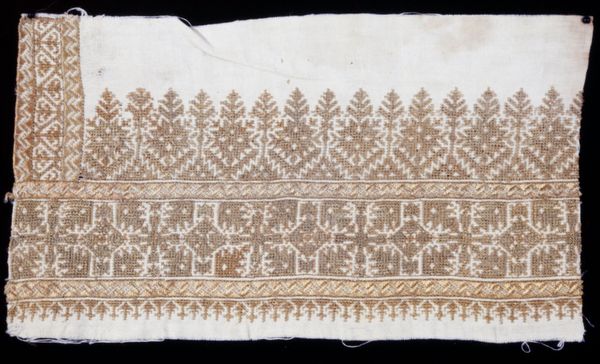
fibre-art, weaving, textile, cotton
#
fibre-art
#
weaving
#
textile
#
embroidery
#
cotton
#
textile design
#
indigenous-americas
Dimensions: 33 3/8 x 30 in. (84.76 x 76.2 cm)
Copyright: Public Domain
Curator: So, we're looking at "Cofradia Tzute," a cotton textile piece likely created between 1955 and 1960. It’s part of the Minneapolis Institute of Art's collection, and speaks volumes about Mayan weaving traditions. Editor: Hmm, initially, it gives off this quaint, domestic vibe, like a really fancy tea towel. The fringe edging is super charming, but something about the geometric patterns edging the piece also feel a bit fierce, no? Curator: That supposed "fierceness" is key. "Tzute" designates its role as a head covering or multi-functional cloth within a cofradia, a religious brotherhood of Mayan tradition. The designs, likely born of specific weaving communities, carry distinct cultural weight and signify community identity. The work embodies Indigenous Americas folk art with this specific type of textile design. Editor: Aha! Okay, that explains the gravity I was sensing. Suddenly it is so much more than tea and biscuits. Seeing it now as a symbol of communal identity shifts the perspective entirely. I almost feel I need to pay it proper respect! The stitching, up close, shows all this incredible texture; what can you say about the use of materials? Curator: The cotton would have been locally sourced, and the dyes natural. The patterns would be pre-determined designs passed down through generations. The piece itself represents labor, identity, and continuity, embedding social structure into its very form. This also challenges Eurocentric notions of "fine art," right? The utility of the textile doesn't diminish its artistic merit. Editor: Totally! It blows that whole hierarchy to bits, doesn't it? I'm now seeing the subtle imperfections in the embroidery and noticing it's the sort of individual expression, like a fingerprint of the maker, but at the same time completely restrained by a shared heritage. Curator: Precisely. The tension between individual skill and communal tradition is exactly what makes these works so powerful and a compelling testament to the complex relationship between identity and artistic expression. Editor: It started as tea-towel whimsy for me, but now I feel a sense of connection to a history, a people, a practice, something enduring beyond us both! Thanks! Curator: Yes, seeing the Cofradia Tzute truly puts our present in perspective.
Comments
No comments
Be the first to comment and join the conversation on the ultimate creative platform.
